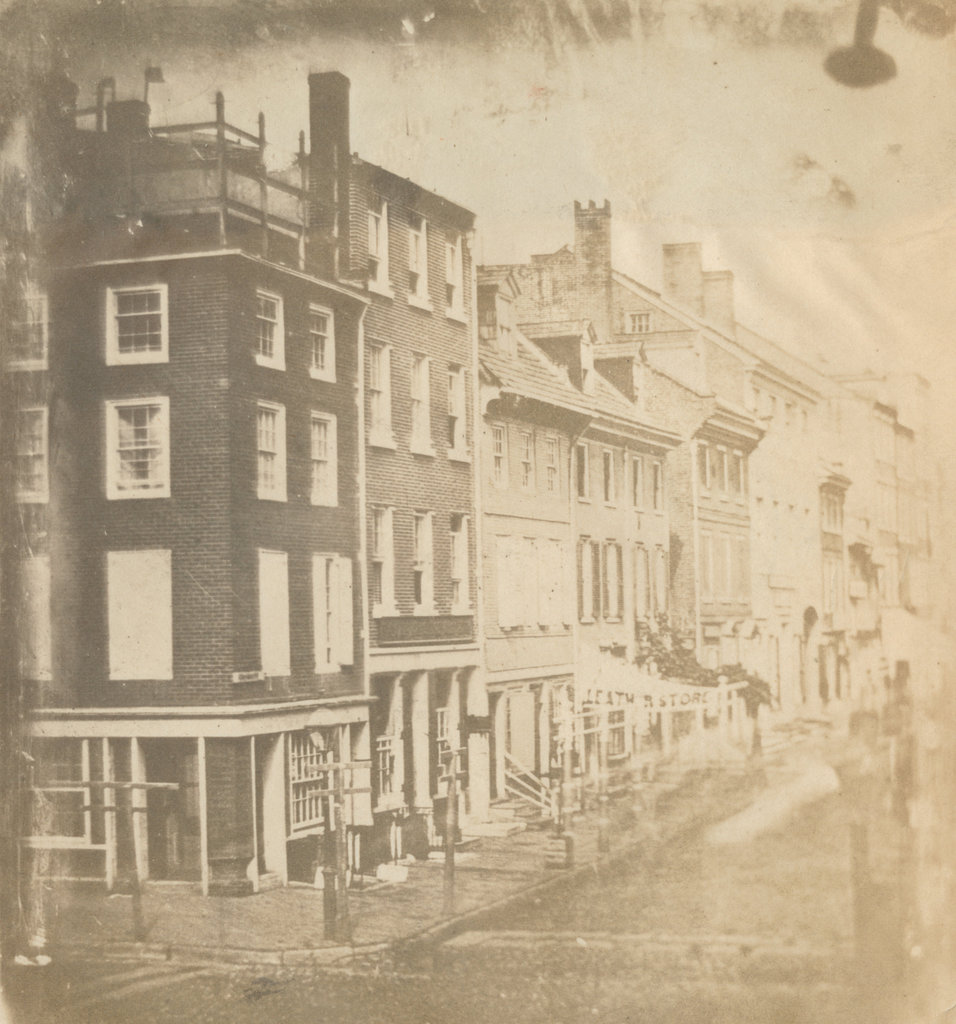Looking east on Chestnut Street from the corner of Second Street in Philadelphia, around 1843. Image is an 1859 photographic reproduction of a daguerreotype taken around 1843. Courtesy of the Library Company of Philadelphia, Frederick De Bourg Richards Photograph Collection.
The scene in 2019:
This is likely the oldest historic photo that I have featured on this blog, dating back to the very early years of photography. The actual photographic print was made around 1859 by Frederick De Bourg Richards, but the image appears to have been from a daguerreotype taken around 1843 by William G. Mason. Daguerreotypes were the first commercially successful photographic medium, producing high-resolution images that rivaled even modern digital cameras. However, daguerreotypes were also difficult to reproduce, as the process yielded only a single image on glass. Unlike later plate glass negatives, which could be used to create any number of prints at varying sizes, daguerreotypes could not be directly converted into prints; the only way to duplicate one was to photograph the original, and then make prints of that photograph. The above photo was one such example of this, ensuring the preservation of the image even though the original daguerreotype might very well be lost to history by now.
This image, along with several others taken by Mason during the 1840s, shows one of the earliest photographic glimpses of the streets of Philadelphia. At the time, the buildings along this block of Chestnut Street were predominantly brick commercial buildings, probably built early in the 19th century. The buildings occupied relatively narrow lots, with most being only three window bays in width, and almost all of them are either three or four stories in height. Aside from the two buildings in the foreground, most have pitched roofs. This was fairly typical for commercial buildings of the era, although by the second half of the 19th century flat roofs became more common. Because this image is a photograph of a photograph, there is not much fine detail, and only one sign is readily legible: an awning on the fourth building from the foreground, which identifies it as a leather store.
The buildings in the foreground appear to have been demolished within a few decades after the first photo was taken, in order to construct a building for the Corn Exchange Bank. This was subsequently demolished around 1900, and replaced with the highly ornate Corn Exchange National Bank building in the present-day scene. The building originally consisted of just the section closest to the corner of Chestnut and Second Streets, but it was steadily expanded during the early 20th century, eventually reaching its current form in the early 1930s.
Today, nearly 180 years after the first photo was taken, this scene still consists of historic, low-rise commercial buildings. However, it seems unclear as to whether any of the buildings from the first photo have survived, or if they were all replaced later in the 19th century. Beyond the Corn Exchange Bank, most of the other current buildings have relatively ornate exteriors, suggesting that they were either built or heavily altered during the second half of the 19th century. However, two of these buildings—located at 117 and 119 Chestnut Street—have much more plain exteriors, so it is possible that they may have been built prior to the first photo and expanded over the years.


